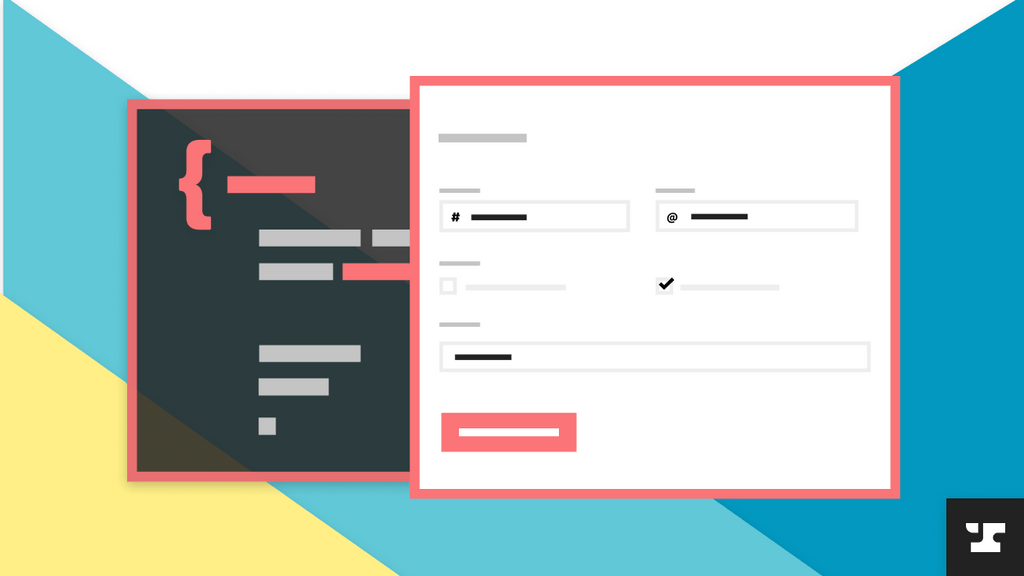A thoughtfully built webform can increase accessibility, reduce drop off, and strengthen trust. In this blog post, I’ll highlight some of the key ways webforms can improve or enhance the end user experience with your product and some specific features of Anvil Webforms that stand out in a crowd of webform tools.
Reduce drop off
Asking your users to complete a webform submission is an ask! For new users without a well of goodwill and value to draw from, they might quickly conclude the investment of time and effort to complete your form isn’t worth it.
Anvil partners with companies in the workforce management space where new users are asked to provide extensive, highly personal information in order to complete government and employer hiring documentation. Traditional methods of hiring and onboarding for high turnover or seasonally dependent employees are inefficient and expensive. Well-placed technology can significantly decrease friction in the hiring process to more effectively place employees into jobs.
Our partnerships in this space have influenced features of Anvil Webforms specifically designed to reduce drop off.
Do away with unnecessary decision making
Webforms should do all the heavy lifting of limiting the decisions users have to make when completing them. Cutting down the number of fields a user sees will greatly lower opportunities for drop off.
Conditional logic
Making questions optional puts the onus on a user to decide if they need to complete a field or not. Conditional logic is table stakes for most webforms and is a simple way to drive the decisions about what information a user needs to provide. Anvil’s Webform builder allows you to add conditional visibility logic to individual webform questions or entire pages based on prior webform field input.
Dynamic length lists
Anvil’s unique list field type would be impossible to recreate with no-code conditional logic. A list allows users to enter information about an array of items of any length and require certain information related to each of those items.
Think of a scenario where a form asks a user to list their beneficiaries when opening a new investment account. A person could have no beneficiaries or 5 or more. Certain information is required for each beneficiary, such as name and relationship. Without lists, you would have to create a static number of fields for beneficiary name and relationship and either make them all optional or spend a lot of time adding in logic. After all that effort, the end result is a clunky experience for your user. You will likely miss required information and limit your users ability to provide all their information through the webform if they don’t get confused or give up and drop off first.
Eliminate excess data entry
Once you’ve stripped down what a user sees to the relevant information and fields, you can further streamline their experience by eliminating excess data entry.
Pre-fill fields
It’s much easier for a user to verify the information than to provide new information. It also shows you know your user and have made an effort to reduce their workload. Anvil’s field aliases make it easy to pre-fill webform fields with data from outside of Anvil, such as your CRM.
Immediate field validation
A webform submitted with inaccurate or incomplete information isn’t actually completed. Asking the user to correct their submission by re-submitting a form or emailing back and forth is time consuming for everyone and not always successful. Anvil’s 30+ webform field types guide users how to correctly enter their information and will not allow them to proceed with incomplete or incorrectly structured data.
For any custom field types, advanced Anvil builders can create their own validation rules via a javascript editor.
Create a digestible experience
Regardless of how much effort you put into hiding irrelevant fields and reducing unnecessary data entry, some forms are always going to be long. You can increase completion rates (and reduce frustration!) by making it easy for users to complete their submission across multiple sessions.
Save and complete later
Anvil automatically saves submissions so users never lose their progress. The “save and complete later” button makes it easy for users to email themselves a link to complete their submission at a later time from any page on a Webform.
Trust and continuity
It takes a lot to build a brand and not a lot to undermine it. Your brand is your “human” touch through technology. For Anvil customers in the financial services industry, conveying trust and security through their brand is absolutely critical to growing and maintaining their clientele. Anvil Webforms make it easy to extend your brand and build trust.
Embedding
Anvil Webforms can be embedded via a simple iframe so your users never have to leave your carefully crafted in-app experience to provide their information.
CSS injection / branding
Anvil’s Webform branding is intentionally inconspicuous. While it doesn’t detract, it probably doesn’t add much in its vanilla version. Once you’ve embedded an Anvil Webform as an iframe, injecting your own CSS is the final step to truly blend in with your visual brand identity.
Full circle data strategy
Creating true continuity for your users goes beyond the look and feel of your product. It’s critically important for your users to feel as though you’ve gotten to know them and are integrating that knowledge to better serve their needs.
A frictionless way for your users to give you information about themselves is half the battle. The second (and more challenging) half is using that data to maintain a complete and evolving profile of your users. In human relationships, we ask a question to learn something about the other person, we integrate their answer into what we know about them, and then we adapt future interactions with that knowledge in mind. Technology should do the same!
Data
Your ability to do something with user data is highly dependent on the quality of that data. Clean, machine-readable data is ironically one of the most important ways to create a personalized experience for your users. From a quantitative perspective, good data in equals good data out. From a qualitative perspective, human hours spent on standardizing data is much better spent engaging with other humans than spreadsheets.
Even clean, standardized data is not very actionable or comprehensive if it’s siloed. Every Webform submission outputs a payload of standardized data that can be used to extend, fill in, or update a universal picture of your users. The real power feature of Anvil Webforms is the infrastructure that underpins your entire customer relationship management system, from engagement to insights.

